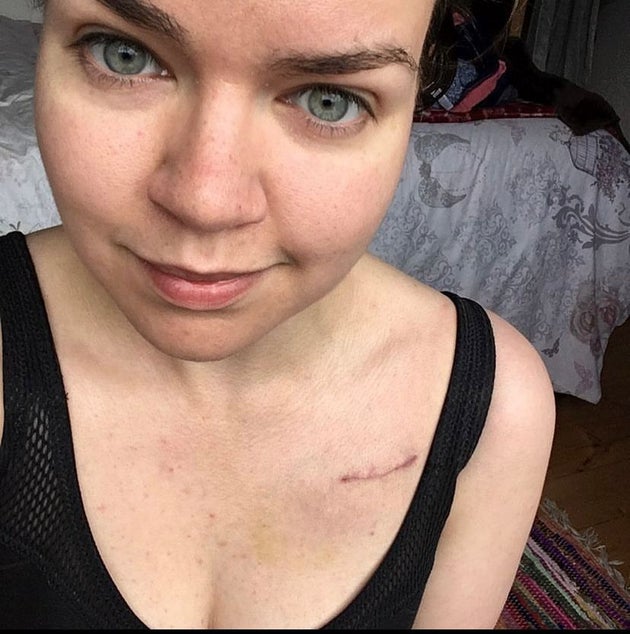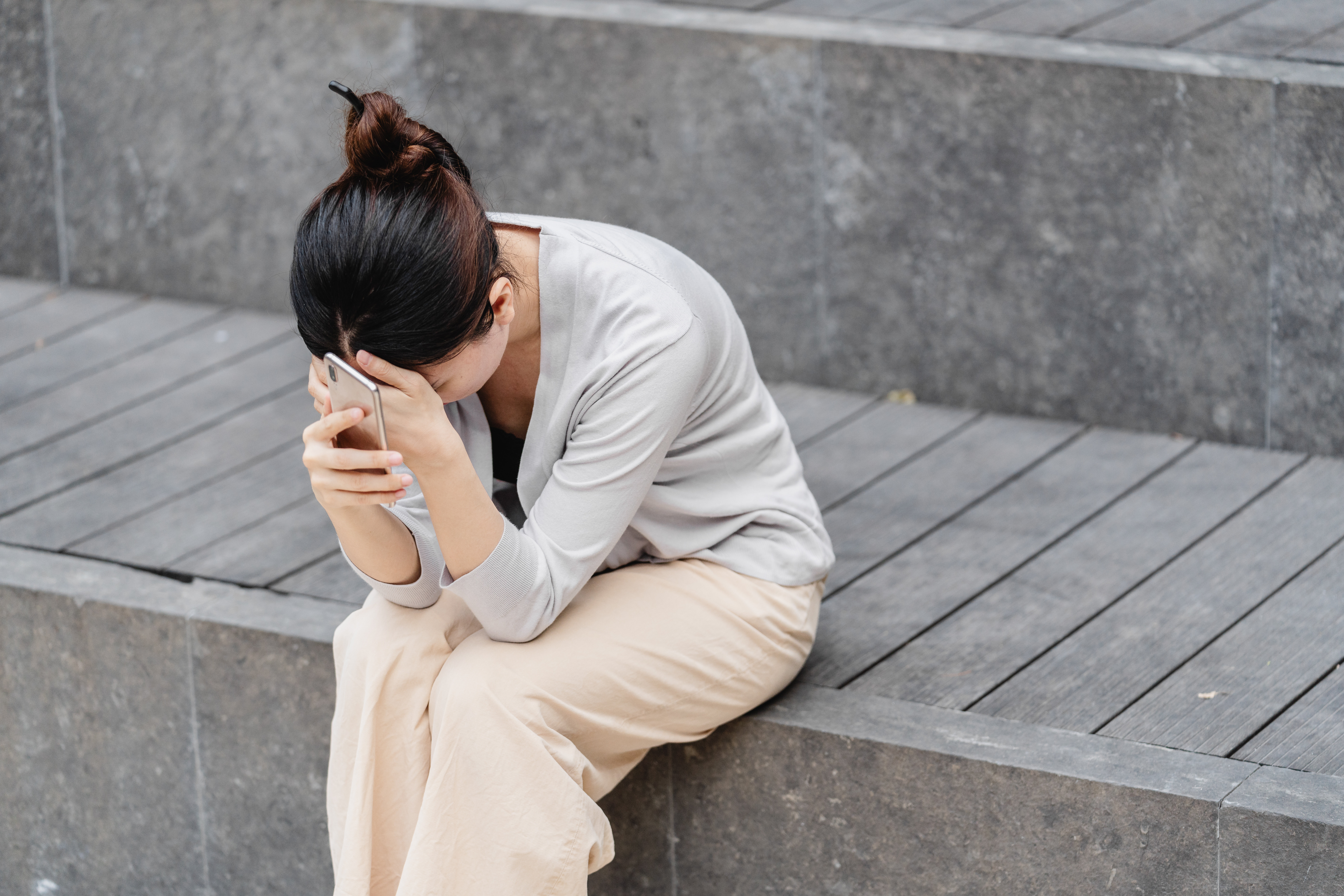In my mid-20s, I was feeling unusually tired and anxious. I found myself starting to fall asleep on the bus home from work each day, and sometimes I felt a strange fluttering sensation in my chest and needed to take slow, deep breaths to calm down.
Since I was young and previously healthy, I figured it was probably just a hormonal imbalance, or maybe a vitamin deficiency. My doctor initially agreed, but after noticing I had an “unusual heart rate,” he added heart health to the list of potential culprits and told me I needed an echocardiogram.
This was enough to send panic running through me. My dad had lived with multiple heart conditions from birth and spent much of his childhood in and out of the hospital for operations. After I was born, his condition worsened, forcing him to take early retirement from work. He couldn’t exercise and had to manage his daily activities so that he didn’t get too worn out. He defied medical predictions about his lifespan many times over, but I was only 14 when we finally lost him to heart disease.
So much of my dad’s life had been defined by his heart condition, and so much of my teenage years were defined by his death. The idea that I was now waiting on my own cardiac diagnosis felt like too much to bear.
Because of him, I was checked at birth for heart problems and was given a clean bill of health. But now, at age 26, the results of my echocardiogram were concerning enough that my doctor put in a call to my local cardiology department, which insisted I be admitted immediately. After being fast-tracked through the emergency room, I spent five days in the hospital, meeting more specialists than I could remember and wearing a 24-hour heart monitor.
I was eventually diagnosed with a rare heart condition called congenital complete heart block, which is often asymptomatic until adulthood. Congenital complete heart block affects 1 in every 15,000-20,000 people and occurs when the heart’s natural pacemakers malfunction, leading to a slow and irregular heart rate. This explained the “anxiety” I thought I was experiencing — it was actually palpitations from my erratic heart rhythm. The biggest risk was that my heart could stop pumping enough oxygen around my body, causing me to pass out, or even go into cardiac arrest.
The medical solution to heart block is a pacemaker. At 26 years old, I was about to be fitted with a device that most people don’t get until they reach retirement age.
My dad had a pacemaker. Almost 20 years earlier, they were larger than they are today, and his protruded from under his skin. The limitations of having a pacemaker are quite specific. They include not putting magnets or electrical devices (like a mobile phone) near the device, not standing in the doorways of stores with anti-theft systems for too long and avoiding contact sports. I was told to stay away from the rowing machine in the gym in case the motion knocked the device against my collarbone and damaged it.
Bizarrely, I was also warned off welding. Apparently, the electromagnetic energy created by a welding machine can wreak havoc on pacemakers.
None of the limitations the doctors told me about would have a significant impact on my day-to-day life. But the emotional impact of knowing that my heart was going to be attached to a battery pack for the rest of my life was hard to come to terms with.
So much of my dad’s life had been defined by his heart condition, and so much of my teenage years were defined by his death. The idea that I was now waiting on my own cardiac diagnosis felt like too much to bear.
Pacemakers need to be replaced every 10 years, which meant that I was facing a lifetime of operations and regular checks to monitor my condition. I was about to become reliant on a battery pack to keep the most important organ in my body working. I would be a cardiac patient for the rest of my life.
In the immediate aftermath of my diagnosis, I couldn’t imagine 30 minutes going by when I didn’t think about my heart condition; when I didn’t experience debilitating panic attacks; when my future seemed bigger than my next medical appointment.
In the days and months that followed, I felt more lonely than I had ever felt in my life. I had gone from being an active, outgoing 20-something who worked, volunteered and went running to someone who found it difficult to get through the day.
While the fatigue and heart palpitations from my heart condition continued, the emotional impact was worse. I developed panic attacks, which left me feeling dizzy, disoriented and terrified to be in crowds or places where I couldn’t sit down. They caused my heart to race, which sent me into more of a panic as I feared my heart condition was getting worse.
I was afraid to exercise in case my heart couldn’t handle it. My social circle shrunk as I dropped out of my regular social activities, and many people simply didn’t know what to say to me. When I mentioned getting a pacemaker, many struggled to believe that someone under the age of 30 could need one.
I am so grateful to all of the family and friends who supported me during that time. But the loneliness I felt didn’t come from a lack of human contact, but rather a lack of connection with people who could understand what I was going through. The one person in my life who could appreciate the reality of life in a cardiology ward had died when I was a teenager. Additionally, everything I was going through resurfaced the unresolved grief of my father’s death.
I felt vain and ungrateful when I worried about how the pacemaker would look in my chest and how visible my scar would be. I feared that I wouldn’t want to wear bikinis or strappy dresses again. While dating was the last thing on my mind at the time, I couldn’t help but wonder whether men would be turned off by how it looked, or, in my more vulnerable moments, by the fact that I had a heart condition at all.
Most of all, it felt like there was no one who could understand how fragile life felt all of a sudden. My heart palpitations were a chilling minute-by-minute reminder of the fact that the most powerful organ in my body was malfunctioning.
In the midst of this isolation and despair, I did what most millennials do — I turned to the internet. I didn’t Google more information about my condition; what I needed was connection. So, on a whim, I typed #pacemaker into Instagram.
 The author two weeks post-op. “After worrying for so long that my heart condition would define me, proudly posting pictures of my recovery made me feel like I had reclaimed the narrative around my own life,” she writes.
The author two weeks post-op. “After worrying for so long that my heart condition would define me, proudly posting pictures of my recovery made me feel like I had reclaimed the narrative around my own life,” she writes.Suddenly, my screen was full of real people who looked like me, who were my age, with a scar on the top left of their chests in common. Some of them were marathon runners, hikers, weightlifters. I saw women and men in their teens, 20s, 30s and 40s who were dealing with cardiac problems and also getting married, taking trips abroad, having babies and laughing with their friends.
As I delved deeper into the hashtags, I started to find people with my specific condition. I found other women in their 20s with heart block, and I started reaching out to them. They gave me honest answers about what recovery really feels like and tips on how to navigate the six weeks post-surgery when I wouldn’t be allowed to lift my arm above my head.
These were the people that I could ask, “How long was it before you could put a bra on after you got your pacemaker fitted?” and “Were you worried about getting your period right before the operation?”
They validated my fears and cheered me on when my operation date finally came. Afterward, they celebrated my recovery milestones and eventual return to normal life.
Many of our conversations took place through just a few comments on a hashtagged post, or a couple of sporadic DMs. And while these intermittent conversations could never have replaced my real-life support network, they offered me something that no one in my physical reality could. These women understood me in a way that only someone who is living the same reality can. Finding those connections was like finding water in the middle of the desert.
After my pacemaker operation, I shared a picture on my Instagram with a caption that stated, “I AM ROBOT!” I had taken it an hour or so after I was out of the operating theatre, while still in my hospital gown with heart monitors strapped to me.
It felt empowering to share it with the world. I was joining the online #pacemakerclub and adding my own face to the group of people who had given me hope. I continued to share pictures every couple of weeks as my scar healed and I settled back into everyday life. After worrying for so long that my heart condition would define me, proudly posting pictures of my recovery made me feel like I had reclaimed the narrative around my own life.
It’s been four years since my pacemaker operation, and every so often, someone will “like” one of my old #pacemaker Insta posts. Every time I get that notification, I know that that person, or someone they love, is groping around in the darkness for a hand to hold, just like I once was. I’ve answered every DM I’ve ever gotten from a stranger asking for advice or sharing their fears.
These days, I am one of those people I once marvelled at through the little squares. My heart palpitations and other symptoms were resolved by the surgery. I run, hike and swim, and I rarely get panic attacks anymore. To my pleasant surprise, I’ve never felt shy about showing off my scar. I have a pacemaker, but I don’t really think about it all that often.
The realisation of how fragile life is has stayed with me ever since, but in a way that has added sweetness to my days, reminded me to savour the sunsets and laugh freely and often. And while I can be as critical as anyone about the impact of social media on our society, I’ll never forget how much it helped me at the time when I needed it the most.






